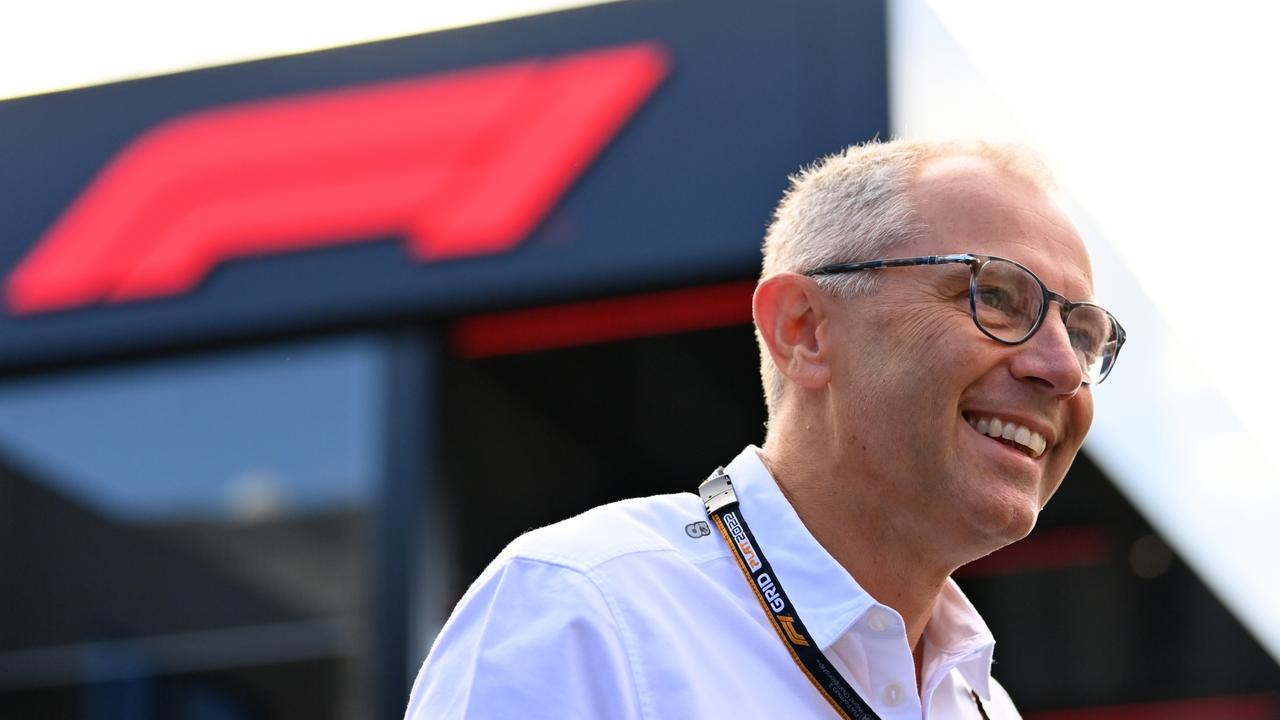Formula 1 is weighing up adding more sprint races to the calendar as well as trialling reverse grid sprints, according to F1 CEO Stefano Domenicali.
The 100-kilometre sprint was introduced to Formula 1 in 2021 originally as a way to set the grid for the grand prix, but the format has since evolved to become a stand-alone race with its own qualifying session at six events each year.
The current format has been in place since last year, with sprint qualifying on Friday evening and the sprint race on Saturday morning before the weekend returns to its usual schedule with qualifying and the grand prix.
Fox Sports, available on Kayo Sports, is the only place to watch every practice, qualifying session and race in the 2025 FIA Formula One World Championship™ LIVE in 4K. New to Kayo? Join now and get your first month for just $1.
Initially controversial, sprint races have become a generally accepted part of the season, having proved popular with fans, race promoters and broadcasters for replacing practice sessions with competition.
Speaking to The Race F1 Podcast, Domenicali said the time was right to expand the format.

“I think there’s the possibility to extend two things, which we need to discuss both with the drivers and the teams and of course with the FIA,” he said. “They are: can we apply that with more races? Is this the right formula with, I don’t know, the possibility to have a reverse grid, as we are doing with Formula 2 and Formula 3?
“These are the points of discussion.
“I think we are getting there to be mature to make sure that this point will be tackled seriously with the teams. The vibes to progress in this direction are definitely growing.
“Therefore I’m ready to discuss not only more sprints — because this is what I see as a request from the promoters, who want to have it because they are able to not change the numbers on Saturday and Sunday, because they are already full, but they will change the number on Friday — [but] if there are new formats, new ideas.
“We are open to that because I think that’s the right thing — to listen to our fans, to try to create something and not be worried to make mistakes, because the one who believes in making no mistakes doesn’t do anything new.”
Domenicali has presided over significant growth in Formula 1’s popularity since ascending to the top job in 2021. The demographic of the fan base has shifted significantly under his watch and now skews younger and more female than in the past.
The Italian boss said it was clear the sport’s new audience was in favour of more sprint racing.
“[The principle is] to have something to fight for on the track that could be seen as relevant for the interest of people … [not] to do some [practice] laps around where people that are new and attracted by something that they think is incredible do not understand what is happening,” he said.
“We saw in our data that it [sentiment] is shifting even more towards getting all the sprints if you go with the new fans, the people that are new to our sport, because they want to see some action. For sure we are ready to think what is the best way to evolve.”
PIT TALK PODCAST: Michael and Matt are joined by F1 TV lead commentator Alex Jacques to rank the top 10 drivers of the Formula 1 season so far — and why their list doesn’t look much like the championship table. Listen to Pit Talk below.
But while Domenicali said there was no future in which Formula 1 would ditch sprints, he was more cautious about putting a number on how many more the sport will introduce.
“I think that the sprint, whatever will be the right format, will represent the future,” he said.
“I think that between six and 24 [sprints], we have to make steps into the middle.”
But whereas the format of a race weekend is up for discussion, the number of grand prix events is locked in.
This year’s season comprises a record-equalling 24 events over 38 weeks, meaning one grand prix roughly every 1.5 weekends.
Domenicali has long been adamant that 24 is the right number of races and has suggested he would be reluctant to consider adding any more, and he pointed to the sport’s commercial platform as evidence that F1 was striking the right balance.
“People want to come, otherwise it wouldn’t be full and sold out at all the races,” he said. “That’s the point that people need to understand. The interest in our sport is massive today. We have the best party in the world.
“Today the number of partners that not only we have but also the teams have means the platform is valuable. When I say valuable, I go back to the point it’s right in terms of commercial offer. If it wasn’t right, it wouldn’t be so possible.
“That is the right number that is sustainable from the commercial but also from the sporting perspective.”
Race hosting fees account for roughly a third of the sport’s revenue alongside broadcast rights and marketing and promotional income.
But Domenicali said the number of races isn’t a purely financial matter, with the need to be present in the media landscape at least as important.
“Don’t forget one thing which is relevant: we are in a world where content is very important to be attractive or relevant,” he said.
“We have only 24 races. Football has I don’t know how many games. Baseball, 165 games. Series every day on TV. To generate content, to be attractive with only 24 races, is a massive task.
“The competition we have today is not only with sport; it’s competition with the entertainment world. It’s not only about money.”
Deflated Lewis says ‘a lot’ is going on | 00:51
If traditionalists are concerned they’re no longer being catered for, Domenicali also threw some red meat to the base in his contemplation of the next power unit formula.
F1 is set to introduce new engine rules next year that will see electrical energy grow to around 50 per cent of power output alongside a turbocharged V6 internal combustion motor.
However, there are discussions over the sport returning to bigger naturally aspirated engines with the help of synthetic fuel — fuels produced with carbon captured from the atmosphere and therefore considered carbon neutral when burnt.
All cars will be powered by synthetic fuel from next season.
A push to introduce V10 architecture before the end of the decade fell over earlier this season, but momentum is growing for a simpler engine to be introduced with the next rule cycle starting in 2032.
“Sustainable fuel V8 I think is great, and hybridisation is, I do believe, the next step of the future,” Domenicali said. “I think that’s the future.”
Domenicali also made it clear he believes the sport’s long-term stability would be served by less complicated motors too, guarding Formula 1 against the whims of the manufacturers that supply the grid with power units.
“The partnership between manufacturers and Formula 1 has been always of love and less love,” he said. “It’s something that has been up and down.
“I think that we are reaching the peak of the love in a moment where everyone would have said mobility has been pushed by regulators to go in a direction [of electrification] that you see is not practical at the end of the day at the magnitude that they were pushing, so now the manufacturers need to find a different technical offer to put in the portfolio of their cars.
“In 2026 — sustainable fuel, big push, hybrid engine, is what will happen with the manufacturers.
“Then if you think what we are already discussing [for] after, with the FIA that has taken the lead on that, it’s really in the direction of a prototype that will be very attractive for the manufacturers but also very attractive to have a possible white-label engine that can be applied and given to the teams in case of a catastrophic situation of the manufacturers, which I really hope will not happen.
“I think all of what is thought on strategic terms is to try and think and cover all the possible scenarios.”

